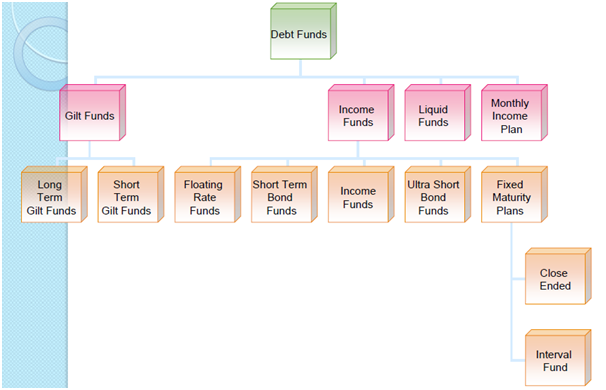What Is an ETF Exchange Traded Funds Definition Types Pros Cons
Post on: 14 Апрель, 2015 No Comment

If youre a buy and hold, long-term investor looking to build a portfolio, exchange-traded funds (ETFs) are worth a look. They have a number of advantages over mutual funds, and you can buy ETFs that focus on nearly any market you can imagine.
However, before investing, its important to understand ETFs. Learn how they differ from mutual funds, and investigate their advantages and disadvantages relative to conventional mutual funds .
What Is an ETF?
Open-End vs. Closed-End Mutual Funds
As you may already understand, a mutual fund is an arrangement in which investors pool their money and hire a portfolio manager to buy and sell securities on their behalf. With traditional open-end mutual funds. investors can buy or sell shares directly from the fund company itself. Closed-end fund shares, however, are traded over exchanges just like a stock, and are typically purchased from other shareholders.
Unless the fund company is buying back shares, or selling founding shares to its initial subscribers, the fund company itself is not involved with secondary market transactions. However, just as with open-end mutual funds, you still have a fund manager (or a team of managers) trying to buy and sell securities on shareholders behalf.
One key difference: When you buy open-end funds, your counterparty (who you buy from) is always the fund company itself. They will buy or sell shares at their net asset value (NAV) as of the market close at the end of the day. If you buy them after markets open, you get the funds closing price for that business day. If you buy them after markets close for the day, you get the price as of the close of the next business day.
With closed-end funds and exchange-traded funds, on the other hand, your counterparty isnt normally the fund company itself, but other shareholders who buy or sell shares all day long, either directly or, more commonly, over stock exchanges. You can buy and sell shares at whatever price you can find a willing buyer or seller.
ETFs and Closed-End Funds
ETFs are close cousins to closed-end funds. Like closed-end fund shares, ETF shares can be bought and sold over stock exchanges, just like any other stock. The primary difference is that ETFs are not actively managed. Instead, the securities in an ETF portfolio are simply a basket of securities designed to replicate an index as closely as possible.
For example, an S&P 500 index fund owns shares of companies in the Standard & Poors 500 list of the biggest publicly traded companies on the New York Stock Exchange as listed by market capitalization. You can buy shares in an open-end S&P 500 fund, such as the Vanguard 500, or you can buy the ETF version, also called a SPDR (spider). Think of ETFs as closed-end index funds. traded over stock exchanges.
Advantages of ETFs
Because ETF shareholders dont need to pay a manager and a team of analysts and brokers to buy and sell funds on their behalf, nor to manage fund inflows and outflows, exchange traded funds typically have much lower expense ratios than traditional mutual funds. Their expense ratios also tend to be lower than open-end index funds, because even open-end index funds have to keep enough staff on hand to process constant purchases and redemptions.
For example, many large cap mutual funds charge expense ratios of 80 basis points, or 0.8% per year, or more. Investor shares of open-end mutual funds typically have an expense ratio of 18 to 50 basis points, depending on the index. Investor shares of large cap index funds, such as S&P 500 index funds, will typically charge 18 to 20 basis points. But large-cap ETF may charge around 10 to 15 basis points, on an ongoing basis.
However, you do need to account for the cost of trading as well. When you buy or sell an ETF or closed-end fund, you will generally need to pay a commission to a broker though some low-cost online brokerages have commission charges as low as $4 per trade. With open-end funds, you may also be assessed an additional sales charge, typically for between 5.85% and 6.2% for Class-A shares if you go through a full-service broker or financial advisor.
That said, you can also buy shares in a no-load mutual fund directly from the fund company without paying a commission.
2. Liquidity
When you buy an open-end mutual fund, you can only buy fund shares once per day, at their net asset value as of the last market close. You cant buy or sell shares during the day: If you own an open-end fund and you hear disastrous news in the morning after the markets open, you cannot sell until after 4pm EST that afternoon. Likewise, you cannot buy on good news. All purchases dont get logged until after 4pm the following day.
ETFs and closed-end mutual funds can both be sold throughout the day over the stock exchanges, though some funds are more frequently traded than others. The more frequently the fund is traded, the easier it generally is to find a willing buyer or seller in a hurry.
3. Short Selling
With open-end funds, you cant engage in short selling. the practice of borrowing shares and selling them in the expectation that share prices will fall. If prices fall, the short seller buys back the shares at the new price and returns them to the original owner, keeping the difference. However, you can short industries, countries, and entire markets using ETF shares.
4. Tax Considerations and Low Turnover
Index funds, including ETFs, tend to be very tax efficient and ideal for holding in taxable accounts. This is because portfolio turnover in index funds is very low, whereas managers of actively managed funds sell securities and buy new ones every time they have a better investment idea. Index funds and ETFs, on the other hand, only sell shares when new securities get dropped from the index, and buy shares only when they are added to the index.
Every time a fund sells a share at a profit, the IRS assesses capital gains tax which gets passed on to shareholders. Since index funds and ETFs dont sell shares very often, it is very rare for them to generate a taxable distribution for their shareholders.
5. Lack of Redemptions
Disadvantages of ETFs
1. Small Discounts
When fund shares get traded in the open market as opposed to being redeemed directly from the fund company itself, it is investors that determine share prices. This price can be higher or lower than the aggregated value of the shares in the portfolio. With closed-end funds, it is frequently possible to buy fund shares at a 5% to 15% discount to net asset value. But the shareholder gets the full benefit of any dividends or interest payments from the fund and the potential for capital appreciation if discounts narrow.
With ETFs, on the other hand, discounts are typically either extremely narrow or non-existent. Investors seeking to benefit from buying fund shares at a discount may be better off going with an actively managed closed-end fund rather than an ETF. This is particularly true for income-oriented investors.
2. No DRIPs

Many investors like to have dividends automatically reinvested in fund shares, in a DRIP, or dividend reinvestment plan. However, this is usually not done with ETFs, as it would require too much fund administration and drive up fund costs.
A big part of the logic of ETF investing is the low-cost structure of ETFs. When you buy ETFs, expect to receive your dividends and interest payments directly, and to pay taxes on them if you dont hold them in an IRA or other tax-advantaged account.
Types of ETFs
Theres an ETF for nearly every purpose. Here are some of the most common types:
- Long ETFs. These take a long position on their underlying indexes. They typically own shares of companies in a specific index. If the index rises, so do share prices in long ETFs, by about the same amount, minus any expenses and trading costs.
- Inverse ETFs. The opposite of long ETFs. They take short positions on the underlying index. Share prices move in the opposite direction to ETF shares. If the index loses money, you win.
- Gold ETFs. These ETFs invest in a representative sample of gold stocks. or they hold claims on actual gold bullion, held in trust by a custodian. Shares in gold ETFs typically move in rough tandem with gold prices. You can also buy ETFs that focus on precious metals more generally.
- Industry ETFs . These ETFs own a portfolio of stocks representing an industry, such as energy and oil. technology, mining, transportation, health care, and so on.
- Country ETFs . These investments buy shares in companies that represent a cross-section of industry in a given country. For instance, they may own shares of the largest 50 publicly traded stocks in a specific country as measured by market capitalization. You can also buy regional ETFs as well, which focus on entire continents.
- Leveraged ETFs . These funds use borrowed money to gear up their portfolios, magnifying returns. They also magnify risks as well. For instance, a leveraged S&P 500 ETF will seek to roughly double the returns of the index, minus interest and expenses. But they will also double the size of losses as well. You can also buy leveraged inverse ETFs these are very risky.
- Currency ETFs. These securities seek to capture the returns of foreign currencies.
- Bond ETFs. These are just like stock ETFs, except they own bonds instead of stocks.
Uses of ETFs
ETFs can be useful to investors who want very focused exposure to a specific industry, region, currency, or asset class at a reasonable cost, without having to worry about researching specific securities. Because their costs are so low, they are also useful as long-term core holdings for buy and hold investors.
For those who use an asset allocation approach to investing, its possible to find ETFs that focus on asset classes that have a very low correlation coefficient with the rest of your portfolio. This means that when your portfolio zigs, the ETF you are looking for tends to zag. The result is, ideally, less overall volatility for your portfolio as a whole.
ETFs are excellent vehicles for getting exposure into gold and precious metals-related securities, specific countries or regions, or specific industries.
Suitability
ETFs are best suited for investors who intend to hold them for a long time. This gives the lower long-term expense ratios of these securities (compared to competing actively managed mutual funds and even open-end index funds) time to build up. They are also very useful as trading vehicles, especially if you dont want to drill-down too deeply in any one company, or retain too much individual company risk.
The most important consideration, from a suitability point of view, is the underlying index and how it fits in with your overall portfolio and strategy.
Final Word
These are just a few of the many uses of ETFs in portfolios. For further details about how to go about investing in an ETF, and whether it makes sense for your situation, speak to a trusted financial advisor. or do your own due diligence on the fund or funds in which youre interested.
Do you invest in ETFs? Why or why not?














